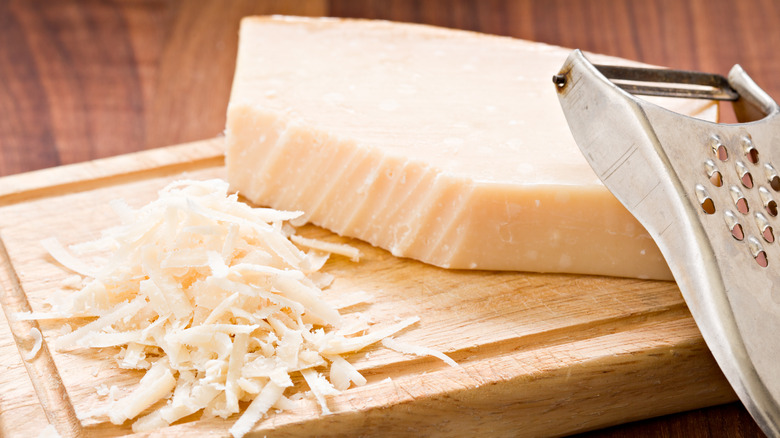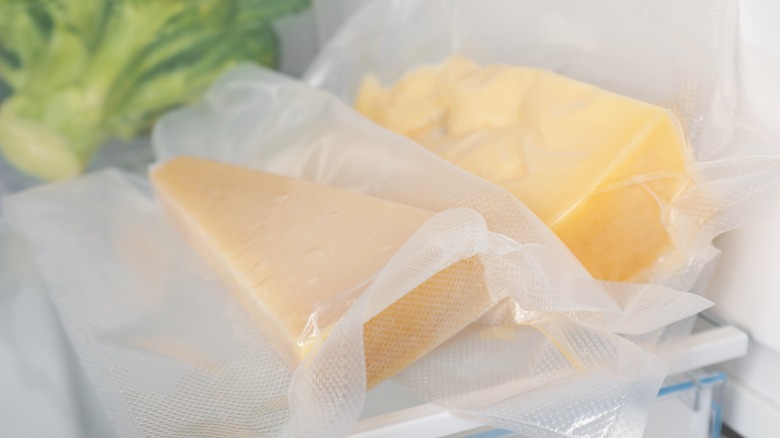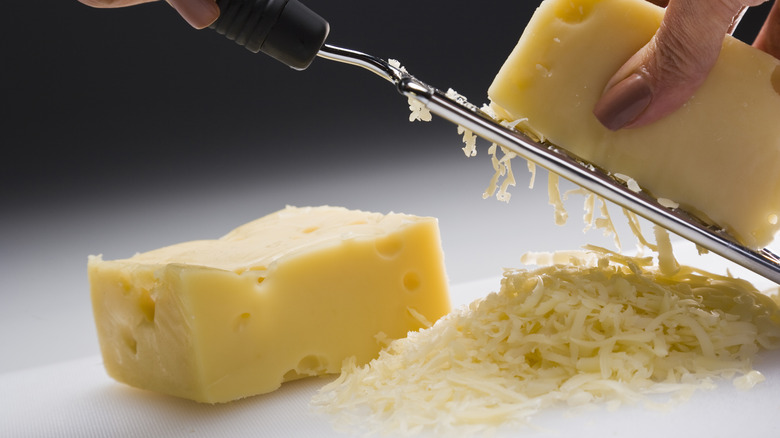The Moisture Tip That Makes Grating Hard Cheese Way Easier
Cheese might just be one of life's greatest culinary treasures. With over 1,800 varieties including those of cow's milk, sheep's milk, and goat's milk, the delectably savory dairy product is not only an excellent source of calcium, but it has cemented itself as a central component to countless cultural dishes worldwide. Its inclusion in both casual and upscale meals is as wide and varied as it comes. But one thing about cheese is certain — whether sharp and tangy or milky and buttery, creamy and spreadable or hard and shreddable — it's simply delicious.
However, if there's any complaint about fromage, it's that it can be difficult to grate for recipes, especially harder varieties such as the irresistible sharp cheddar, Monterey jack, or parmesan. Luckily, there's a trick that helps add moisture that makes grating it much easier. Turns out, wrapping your cheese in damp cheesecloth or a damp paper towel and refrigerating is the key to creating the perfect grating texture for your favorite dish.
Adding moisture to your hard cheese
One simple way to add moisture back into it is by wrapping your block of cheese in slightly damp cheesecloth and storing it in a resealable sandwich bag in your refrigerator for at least one hour and up to one day. But you'll want to be sure to store it in a compartment that is set to high humidity, such as your crisper drawer. The humidity in the drawer will supply the moisture needed to soften the cheese to a more malleable grating texture. Alternatively, you can wrap your block in a damp paper towel and chill it the same way.
Once it is sufficiently softened, you're free to grate it. But first, it's good to note the differences between semi-firm and firm cheeses before you start shredding because the outcome will not be the same. Use the largest shredding holes for the semi-hard versions, such as cheddar and Monterey jack, and the smallest holes to create fine shreds of cheese that are dissolvable in dressings, such as parmesan. But be sure to spray your grater with nonstick cooking spray beforehand to prevent your shredded cheese from sticking to the grater and to make that laborious cleanup much easier.
Other useful cheese-grating tips
There are a myriad of other tips you can utilize to easily and efficiently grate your hard cheese, including making a slight adjustment to your grater position. As opposed to the typical vertical-standing grating method, which can be difficult and presents the risk of scraping your knuckles and fingers, try placing your tool on its side before grating, with the holes facing up. This way, you're easily able to move your cheddar across it to grate horizontally and the newly shredded cheese will fall into the body of the grater, giving you more overall control over the process.
Additionally, if you're grating a soft Italian cheese, you'll want to consider partially freezing it first. Softer varieties can be extremely hard to grate successfully without getting mushy or stuck in the grater holes, so freezing your block for 15 to 30 minutes beforehand will result in a firmer fromage that is much easier to slice and grate. But be sure to keep your cheese either in its original packaging or a resealable sandwich bag so that its exposure to air is limited and it stays fresh. Then, simply grate as usual and enjoy.


